In the winter season of cold, snow and holiday music, the North American bird breeding and nesting season seems months away. It’s not until the trees begin to bud and flowers bloom that the birdsong fills the air.
And that’s true. But not for great horned owls.
Winter is the time to enjoy the great horned owl breeding season–a time when these charismatic birds are much easier to see and hear.
It’s the hooting season.
Don a winter cap and head out to your local park or walking trail to enjoy one of the season’s coolest spectacles. Here’s what you need for your next owl outing.
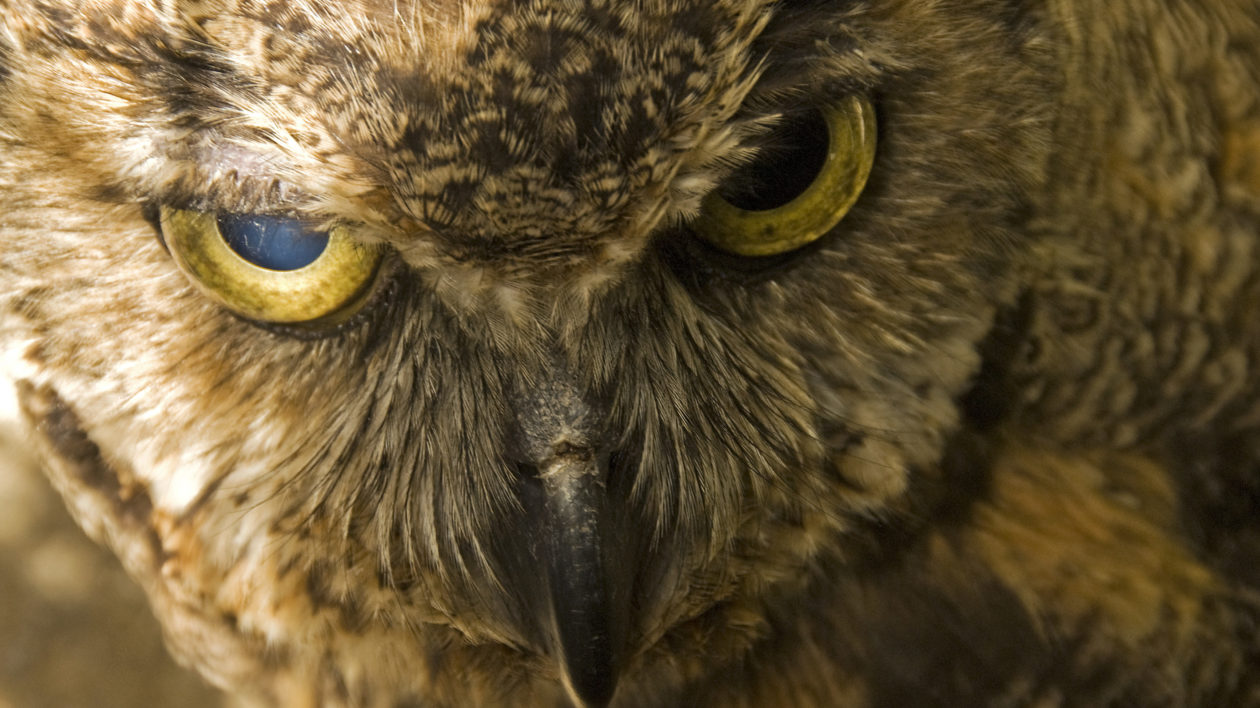
Into Owl Territory
The great horned owl, of course, is one of the most recognizable birds in the Americas, with its pointy feather tufts (the “horns”) and large fluffy appearance.
This is the prototypical “wise old owl,” and the owl of cartoons and children’s books.
It’s also incredibly adaptable, found from Canada to Patagonia, and most places in between. It is at home in desert and wetland, forest and prairie. And it also has no trouble thriving around people: you can find them in parks, farms, small woodlots, suburbs and cities.
Despite this, they’re not always easy to spot due to their nocturnal habits. But at this time of year, in the right location, a chorus of hoots provides the soundtrack to dawn and dusk.
That’s because, around October, male great horned owls begin setting up territories. Most great horned owls mate for life, but in the fall the pair begin a courtship display, loudly calling to each other.
Become a Member
Make a lasting impact for nature when you join The Nature Conservancy
The great horned owl’s hoot is pretty much unmistakable, although ornithology web sites often describe it in different ways. A common hooting pattern is a longer hoooooot, followed by two or three shorter hoots.
And these owls have a range of other vocalizations, too, some of which sound like barks or a screeching cat. (Cornell’s All About Birds site features some great audio of these different calls).
The owls continue setting up their territory this month, and begin setting up a nest.
They’ll use an abandoned nest previously used by a red-tailed hawk, squirrel or other critter. Come January, they’ll begin setting in the nest–far earlier than most other birds.
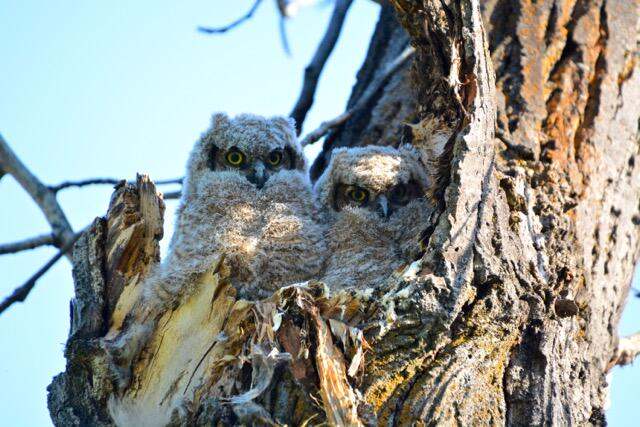
Why Do Owls Nest So Early?
Nesting early naturally entails some risk. Eggs must be kept warm and incubated, which can be a challenge when the temperature is in the single digits and snow is falling.
Female owls stay on the nest for prolonged periods (and when they leave to hunt, the male will take over).
If the eggs become too cold, they won’t hatch. This is why most birds wait until temperatures are warm and mild.
So: why nest early?
Owls are large birds. It takes them longer to grow and mature than, say, a songbird.
Young great horned owls must also master complex hunting maneuvers. They are equipped with superb senses – researchers have found that a great horned owl can hear a mouse rustling at 900 feet – but hunting still involves learning, trial and error.
Early hatching means they’re ready to practice their flying and hunting skills when the weather is mild and prey is abundant.
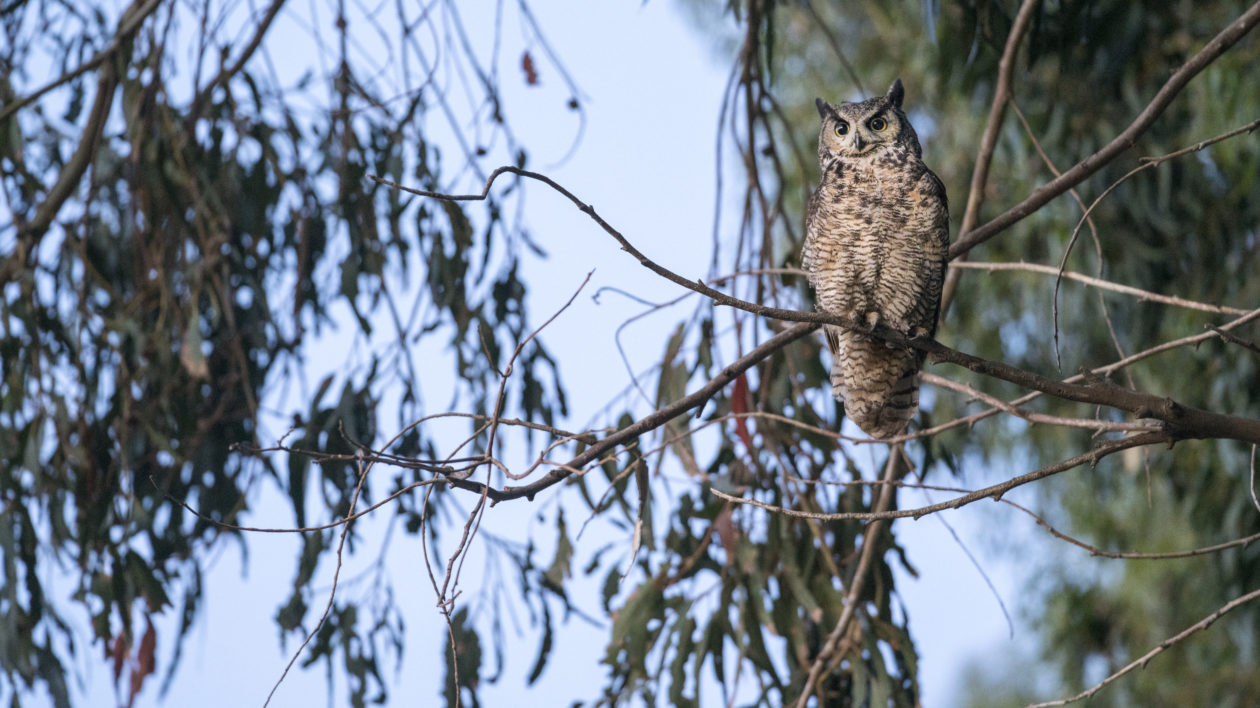
Enjoying the Owl Show
There’s likely a great horned owl territory near you. Now you just need to find it.
While owls can live in a variety of habitats, you won’t find them just anywhere. Focus on the edges. Owls prefer to have a good vantage point – a place where they can see out over the terrain.
Trees that overlook an open area are ideal. In particular, try to find a big-limbed tree that has shed its leaves (or a dead one). You can often find owls roosting there.
You can do a bit of scouting, too. Owls regurgitate the indigestible hair and bones of their prey: called owl pellets. You can often find a number of these pellets below preferred trees. (You can often reassemble the bones of mice by dissecting an owl pellet, another fun wintertime activity).
Of course, the easiest way to spot owls is not by looking, but listening. Those haunting hoots carry a long way. Sometimes you almost feel those hoots before you see them.
Once you hear the hooting, look carefully in likely trees, and you may be able to see the distinctive profile of the owl. Look through a binocular, and don’t be surprised if the owl is staring back at you.
It pays to quietly observe the owls for a while. I’ve been able to watch some interesting behavior, including owls mating.
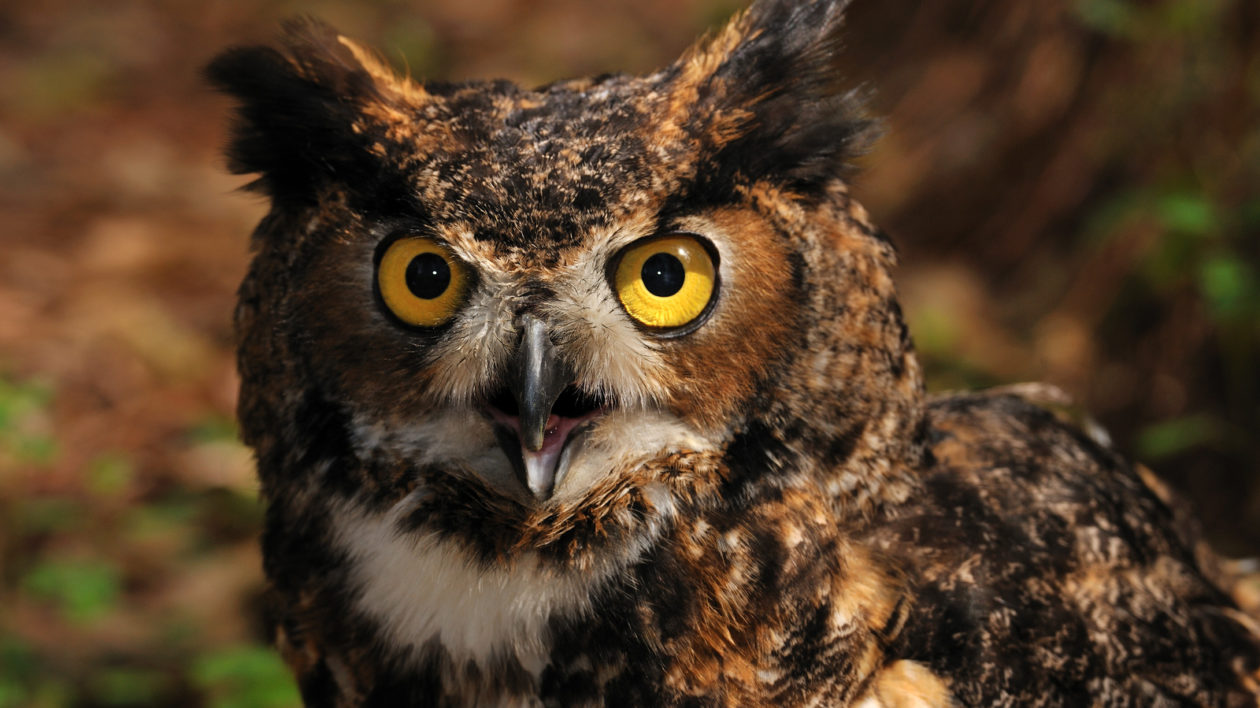
Photo © Mark Conlin, courtesy of Tallahassee Natural History Museum
My Owl Connection
Family lore holds that, long before I could utter words, I would lie in my crib and hoot like an owl. Perhaps my naturalist path was set, even then.
That story has been in my thoughts this year, as I prepare for the birth of my own son. The great horned owls, it seems, are everywhere. I see them perched on trees around our home and along the greenbelt jogging path; hear their calls in the canyons and river bottoms.
I’m always alert to the local wildlife, but this year, I can’t help but pay extra attention to all that owl activity.
I wake up in the middle of the night, thinking of my son and the world he’ll inhabit. And then, there it is: that deep hoot, hoot, hooting.
It seems to fill the room.
I snuggle under the covers and smile, filled with the hope that my son will find such comfort and joy in the wild things and their always-interesting ways.
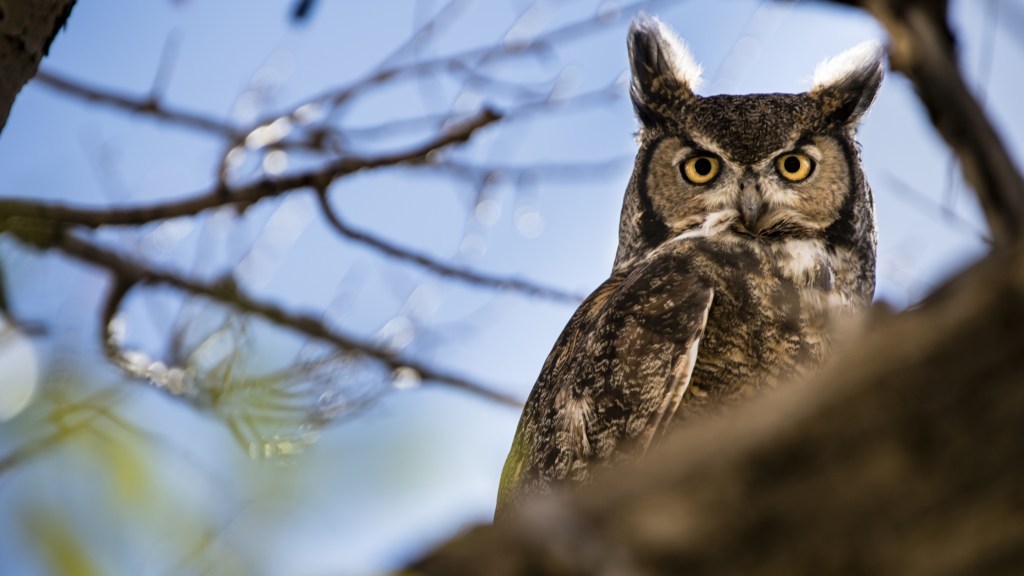



Thanks Matthew, while not a huge fan of winter, I do love listening to the great horned owls hooting all night long. Occasionally I get to watch one take wing, which was the treat I experienced at dawn today.
Upstate SC
I had the pleasure, again this evening, of hootie hoots capturing my attention. I could hear them above the tv and space heater. I silenced them both and listened for a while. Then opened the front door, and to my surprise, another was returning those hoots I could so plainly hear. I stood there for several minutes with the door cracked, even recorded some on my phone so my husband could listen when he got home from work.
A few years ago, while on an evening walk, one swooped out of the tree in front of us and over our heads. The wing span was amazing. What a spectacular sight to see.
I am wondering if the juveniles “grow out” of their shriek? Do they just finally quit calling for food? Our local young one is still calling, albeit, getting quieter or hoarser, but still calling on December 6. Any research about this?
Thank you for all your information. I have a question. I have built a Barn Owl house to place and hopefully attract them. I do live in Great Horned Owl territory. Do these owls live harmoniously in the same areas or will I have a hard time attracting Barn Owls due to the Great Horned Owls that already claim this area?
Great-horned owls can be quite fierce, but the two species do live in the same areas, so I would not worry.
Lovely article. Yes you really can feel them hooting!
I love owls! Ukulele HollyBloe USA
I live in the city of Sun Prairie Wi. We have Great Horned owls living in our neighborhood. A few years ago they nested in a squirrel house in a maple tree in my neighbors back yard. They had three young which one fell out of the nest after it fell apart, and I told the neighbor to call raptor rescue. The raptor rescue guys came out and took the two remaining live young along with an orphan from some other area and put them in an apple basket mounted where the original nest was located. The owls adapted to the new nest, the young all grew up. I noticed one morning that the young were taking a bath in my small bird baths on my back deck. Big bird to be in a small dish. I bought one of those 48 inch kid pools, filled it half full and the owls used it frequently in the mornings. I never thought that a big fluffy bird like that would take a bath, but they do. Kid pool is gone but i keep dishes of water out there for them and the other birds. Lots of hooing last couple of weeks again. Got some great pics.
My house is backed up to woods in front and behind. I love to hear the haunting sound of the hooting owl. It starts in October and then I hear them until the weather gets cold. I’ve only seen a pair of Great Horned Owls once in a tall pine in the woods behind my house. This year however, I started hearing them in June, always at night from about midnight on. I will awake to their hooting sound. They fascinate me!
Over the years, we have seen and heard numerous Great Horned Owls in the woodlot behind our house, and in the large trees in the cemetery across the road.
Lately, (for a couple of weeks) we have been hearing a great horned owl calling constantly, all day long without pause, in the woodlot behind our house. Than, after dark, the frequency dies off and it only calls occasionally. I have been trying in vain to find out why it might it doing this. I read in your blog that around October, they begin setting up their territories. Would a young one be calling all day long to do this? We are in Southwestern Ontario, Canada
Matthew we live in a development in Milford DE and have been blessed with the hooting of owls for months but tonight we saw them, could not very well watch for long because they were sitting on the roof of a villa and I don’t think people would appreciate us doing that, but was so exciting!
I have an interesting story about the Great Horned Owl. I was looking up owls on my computer and decided to listen to the owl calls (on computer). One call was a loud shriek that seemed to reverberate around the room. I played it again as it was so haunting. That night at two in the morning, I went out onto my balcony, in a heavily wooded area near Lake Ontario, and heard the very loud call of a Great Horned Owl which had never called before. I’ve lived in this area for over 30 years, previously in a house, and have never heard this call (but did have a Saw Whet living in my back yard). I believe the Great Horned Owl was in the vicinity and because of the extraordinary hearing ability of this owl heard my computer and was now answering. Isn’t that amazing?!
We have 3 great horned owls here on our property in Marana, Az. They took over a hawks nest. They’ve since laid eggs on the fonts of a palm tree also. They also rest in the bottle trees. I watch one from my ramada every morning, resting,, I guess?So awesome to hear their hoots. Thanks for the article. Very interesting.
I feel the same visceral joy and comfort when I hear the owl couple call to each other early every morning !!! Nancy
Here in Scottsdale AZ we’ve been fortunate to see two seasons of newborns. Today we noticed one of the adults return to the nest in one of our palms! Hooting has increased over the last week.
The “children” have been keeping us entertained in our community. The owls walk on our grass or paths, sit on our tennis court lights at dusk and show us some terrific flying skills. Of course, we get buzzed but it’s playful.
One of our owners had her picture published in Phoenix magazine
They are very comfy here & a huge source of happiness during Covid. We are thrilled they are back